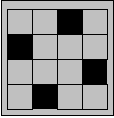
Figure 3: A solution to the four queens problem.



DJ can be used not only to build graphical user interfaces but also to solve constraint satisfaction problems in general. In this example, we show how to describe the N-queens problem and display the solutions graphically. Figure 3 shows a solution to the four queens problem.

Figure 3: A solution to the four queens problem.
The following shows the program:
main class Queens {
static public final int N = 4;
component Rectangle squares[N][N];
attribute int queens[N] in 0..N-1;
for (i in 0..N-1,j in 0..N-1)
queens[i]!=j -> squares[i][j].fill==false;
notattack(queens,N);
grid(squares);
}
constraint notattack(int[] queens,int N){
for (i in 0..N-2,j in i+1..N-1){
queens[i] != queens[j];
queens[i] != queens[j]+j-i;
queens[i] != queens[j]+i-j;
}
}
There are N * N squares that form the chess grid
board and N queens. If queens[i]=j, then there is a queen
at the grid (i,j). The for statement determines which grid
should not be filled, and the constraint notattack ensures that
no two queens attack each other.


